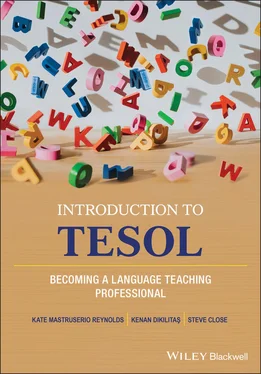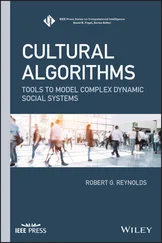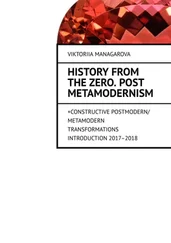The use of English in these contexts may generate new language patterns or norms that have more to do with efficient communication and clarity than with traditional or formal English language use; however, speakers are typically successful in their communication. Kate had frequently interaction with speakers of diverse languages while living in Doha, Qatar, where roughly 88% of the population is from outside the country (Demographics of Qatar, 2019). Many individuals were from nearby countries in the Middle East and Asia, but also from the Philippines and Malaysia. The official language of Qatar is Arabic. English is also employed there as an international language, because it is a commonly learned language and many people have learned some of it. Street names were often not marked, so it was often necessary to negotiate at length with cab drivers about where to go, and how to get to a particular location. Communication between Kate and a cab driver depended in large part on each speaker’s knowledge of the area and abilities in Arabic for the street names and oral English. Many language shortcuts were taken to ensure that they understood each other and had the same location in mind. These types of interactions, if frequent, create new language patterns.
Language extinction, linguistic imperialism, and language policy
In locations worldwide, the native languages of communities are becoming extinct, meaning there are no new speakers of the language due to the increased usage of other languages. Often these other languages are English, French, Portuguese, and Spanish. To demonstrate the decreasing use of indigenous languages, Oré and Diaz (2019) report that, “Brazil, the region’s most linguistically diverse country, runs the risk of losing a third of its 180-plus languages by 2030. In Mexico, almost two thirds of its 68 languages are on the brink of disappearance. This trend repeats in Argentina, Bolivia, Colombia, Chile, Ecuador, Paraguay, Peru and Central America” (Oré & Diaz, 2019). The growth of English as a lingua franca is a contributing factor in language extinction.
Increasingly, people who do not have any intention of living or working in an English-speaking country need to be able to speak English for work and other purposes, so they opt to learn it. On one hand, that is a good for the employment prospects of TESOL professionals; on the other, it means that some native languages and/or indigenous languages are not maintained in some contexts. For example, a refugee to the United States from Guatemala who speaks Quechua and Spanish would learn English in the United States. That individual may also use Spanish, since it is a common language there. Furthermore, that individual might choose not to speak Quechua to their children. If the children of this individual learn to speak English and Spanish, the result is that there are fewer speakers of Quechua. This is how languages die out over time.
As a whole, the current extinction of languages worldwide can be traced back to the imperialism in the 16th to 19th centuries. Phillipson (1992) and Canagarajah (2003) linked the dominance of English worldwide and the rise of English as a lingua franca to the imperialistic endeavors of Britain in places such as, India, Hong Kong, Nigeria, and the United States in Guam, the Philippines, and Puerto Rico. When these colonizing forces took control of these locations, English became the language of power and knowing the language of those in power was an advantage; however, with the upsurge of English, the native languages declined. Moreover, the colonizers’ values and ideologies were promoted during the instruction of English in these locations. Linguistic imperialism is the promotion of one dominant language to the exclusion of others and the furtherance of the cultural values and ideologies associated with the dominant language.
The practice of linguistic imperialism varies in intensity and intent. A community may be forced simultaneously to learn the language of a colonizing force and to consciously suppress the native language. This was the case in many of the satellite nations of the former Soviet Union and Native American nations of the United States. Other cases of linguistic imperialism are less intentional and hegemonic (i.e., the social, cultural, and linguistic sway applied by a dominant group). For example, in India, where there are 121 languages spoken, the arrival of English meant that those who communicated only in non-English languages were at a distinct disadvantage; therefore, people opted to learn English. In this case, the British teachers did promote British culture, values, and Western ideologies with the instruction of English.
From a critical theory perspective, it is vital for TESOL professionals to be aware of the issues around the dominance of English worldwide, and embrace the variations in English and local language use. Teachers can do this by showing respect for students’ home languages and cultures, being cautious about promoting the cultural values or ideologies associated with the countries where English is spoken (i.e., norm-generating), asking parents to read in their native language(s) to their children at home, promoting learning of languages other than English, and supporting educational policies that clearly encourage the maintenance of other languages. It is in this manner that TESOL professionals can serve language learners in various contexts, reduce linguistic imperialism, and support native languages of students.
ELL stands for English language learning . It has come to mean the study of English as another language. This term does not imply any particular context, but has been adopted frequently in the United States, particularly in the public K–12 schools. It has some positive connotations, because it places the focus on learning. This acronym emphasizes the study of language, but it shares an abbreviation of ELL, which can mean English language learner, a phrase which refers to the students studying English. Depending on the situation, this difference may be problematic. Other English professionals, those who teach English composition (writing) or literature to native English speakers, have vocalized some concern about the term, too, arguing that they also teach English language learning, but with a different population and focus. Others find the term to be redundant. All in all, it is considered a less problematic term than ESL and many educators use it.
Some other common acronyms that you will encounter in the field are NL, TL, L1, L2, NS, and NNS. Juanita is a native speaker (NS) of Spanish in Mexico. We can say Spanish is her native language (NL) or first language (L1). She is learning English as an additional language. In this case, English is the target language (TL) or second language (L2). She studies with Ms. Milagros, who is a nonnative speaker (NNS) of English. These common acronyms will be used throughout this textbook, so you may want to commit them to memory.
Differentiating the focus from language teaching to preparing language teachers
Anyone who has tried to look up teaching English by “ESL” will be familiar with the difficulties associated with the use of ESL versus TESL or EFL versus TEFL. Not only do they look similar, but also their meanings are sometimes confused. Generally, if it has a “T” at the beginning of the acronym, it means teaching English as a second/foreign language (TESL/TEFL) and is used to describe the preparation to become a teacher of ESL/EFL. The emphasis is on the teaching of the subject. Applying this rule, the acronym “TESOL” then indicates teaching or teachers of English to speakers of other languages. Two professional organizations, TESOL International Association ( www.tesol.org) and International Association of Teachers of English as a Foreign Language (IATEFL) ( www.iatefl.org), have the T in their acronyms, but are used to describe the processes of teaching and learning of English in differing contexts.
Читать дальше












